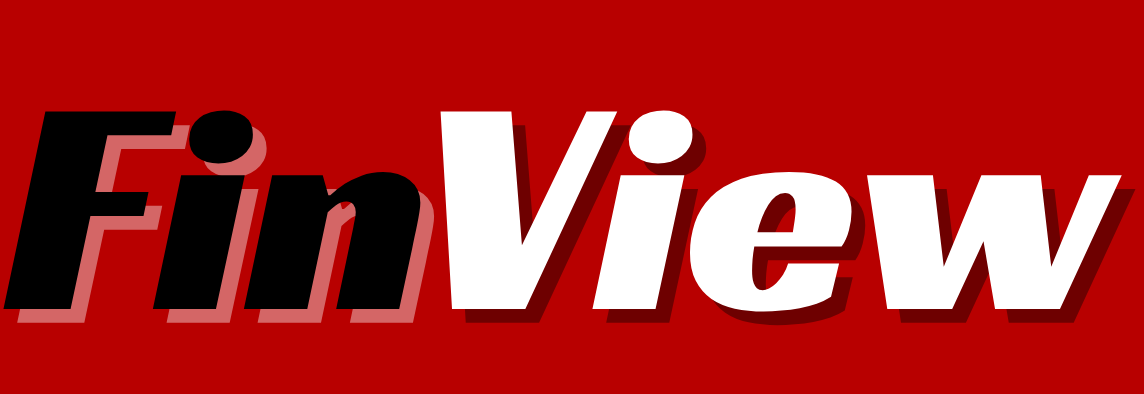Despite the prevalence of employer-sponsored retirement plans among Americans, a staggering 53% of Gen Z workers remain unengaged in retirement savings, as revealed by Empower research. This statistic underlines the imperative of grasping retirement savings methodologies with utmost urgency.
Experts such as Dave Ramsey underscore the significance of establishing a robust 401(k) base, advocating against speculative investments. Amidst the backdrop of economic unpredictability, your employer’s retirement plan emerges as a formidable instrument for securing your financial future.
This guide delves into efficacious strategies to augment your retirement savings. We will dissect contribution methodologies, investment strategies, and tax benefits that could potentially enhance your retirement fund by hundreds of thousands of dollars over your professional lifetime.
Whether you are embarking on your career or nearing retirement, these practical techniques will equip you to sidestep common pitfalls while maximizing growth. The distinction between an average and a maximized 401(k) could be the difference between a financially strained and a financially secure retirement.
Key Takeaways
- Contributing at least enough to capture your full employer match prevents leaving free money on the table
- Gradually increasing contribution percentages with each raise helps painlessly boost savings
- Understanding investment options within your 401(k) can significantly impact long-term growth
- Tax advantages of traditional and Roth 401(k) options offer different benefits depending on your situation
- Regular portfolio rebalancing maintains your desired risk level as markets fluctuate
- Avoiding early withdrawals preserves compound growth over decades
Understanding the Basics of a 401(k)
Comprehension of a 401(k) plan’s foundational mechanics is imperative prior to strategizing for retirement wealth accumulation. Such knowledge serves as the bedrock for informed financial future decisions.
A 401(k) represents an employer-sponsored retirement savings mechanism, enabling employees to allocate a fraction of their pre-tax earnings into a tax-advantaged investment vehicle. Originating from Section 401(k) of the Internal Revenue Code, these plans have revolutionized retirement preparation for Americans, commencing in the early 1980s.
Contributions to a traditional 401(k) are deducted from one’s paycheck before taxes are applied. This action diminishes current taxable income, facilitating tax-deferred investment growth until retirement withdrawal.
The allure of 401(k) plans resides in three primary benefits. Firstly, tax advantages offer immediate income tax savings. Secondly, many employers provide matching contributions, effectively free money augmenting retirement savings. Lastly, these accounts leverage compound growth over extensive periods.
Financial guru Dave Ramsey advocates prioritizing 401(k) contributions over speculative investments like cryptocurrency. He posits, “Wealth accumulation is a marathon, not a sprint. Persistent 401(k) investing surpasses the allure of fleeting investment opportunities.”
Typically, 401(k) plans present a spectrum of investment choices, encompassing mutual funds that invest in stocks, bonds, and money market instruments. This diversity enables the creation of a portfolio tailored to your risk tolerance and retirement horizon.
Grasping 401k contribution limits is critical for optimizing savings capacity. For 2023, the IRS stipulates an annual contribution ceiling of $22,500 for 401(k) plans, with catch-up contributions available for those aged 50 and above.
Roth 401(k) options, though less prevalent, are gaining traction. The distinction between traditional and Roth 401(k) plans lies in tax treatment—traditional contributions are tax-deductible at contribution but taxable upon withdrawal, whereas Roth contributions are made post-tax, yet grow tax-free.
Effective retirement savings strategies commence with integrating your 401(k) into your overall financial landscape. Financial advisors often counsel contributing sufficiently to capture the full employer match before allocating to other savings vehicles.
By mastering these foundational concepts, you will be positioned to make strategic decisions regarding contribution levels, investment allocations, and long-term planning for your retirement security.
The Importance of Employer Matching
The most compelling reason to prioritize 401(k) contributions lies in the employer matching funds, which significantly amplifies your retirement savings. Employer matching offers free money towards your future, a benefit unparalleled in most investment vehicles.
Financial expert Dave Ramsey advocates for prioritizing retirement, starting with contributions to capture the full employer match. This advice is foundational for sound retirement planning.
Employer matching represents an immediate return on investment, often 50% to 100% depending on the company’s formula. This immediate “profit” is virtually unattainable in any other investment scenario.
Most companies structure their matching programs in several common formats:
- Percentage match up to a limit: For example, your employer might match 50% of your contributions up to 6% of your salary. If you earn $60,000 annually and contribute 6% ($3,600), your employer adds another $1,800 (50% of your contribution).
- Dollar-for-dollar match: Some employers match your contributions 100% up to a certain percentage of your salary. If your employer offers a 100% match on the first 4% you contribute, and you earn $60,000, contributing $2,400 (4%) would result in another $2,400 from your employer.
- Tiered matching: This structure provides different matching rates at different contribution levels. For instance, 100% on the first 3% you contribute and 50% on the next 2%.
Despite the obvious advantages, data from Vanguard reveals a surprising statistic: approximately 21% of 401(k) participants don’t contribute enough to receive their full employer match. This oversight leaves an estimated $24 billion in free retirement money unclaimed annually across America.
Not capturing your full employer match is equivalent to declining part of your compensation package. If your employer offers a 3% match and you’re not contributing at least that amount, you’re voluntarily reducing your total compensation.
“Not taking advantage of your company match is the same as volunteering for a pay cut. It’s turning down free money that compounds over time.”
When developing your 401(k) strategy, we recommend following this priority order:
- First, contribute at least enough to capture your full employer match
- Then, increase contributions gradually toward the annual maximum as your budget allows
- Lastly, consider additional retirement vehicles once you’ve maximized your 401(k) benefits
The long-term impact of employer matching is profound. A 3% employer match on a $60,000 salary equals $1,800 annually. Over 30 years, assuming a 7% average annual return, that “free money” alone would grow to approximately $170,000—without counting your own contributions.
Understanding and maximizing your employer matching contributions is the first critical step in maximizing your 401(k) effectively. It provides an immediate, guaranteed return that forms the foundation of a successful retirement strategy.
Setting Contribution Goals
Strategic goal-setting for your 401(k) contributions transforms abstract retirement dreams into actionable financial targets. Without clear objectives, you might find yourself contributing arbitrary amounts that fail to align with your actual retirement needs. Establishing specific contribution goals provides the roadmap for your retirement journey and helps ensure you’re making meaningful progress.
The foundation of effective contribution planning begins with a realistic assessment of your retirement needs. Financial experts typically recommend aiming to replace between 70-85% of your pre-retirement income during retirement years. This percentage varies based on your individual circumstances, expected lifestyle, and anticipated expenses.
Key Factors Affecting Your Retirement Needs:
Several critical elements influence how much you’ll need to save. Healthcare costs represent a significant consideration, with Fidelity’s research indicating that a 65-year-old couple can expect to spend approximately $315,000 on healthcare throughout retirement. Your housing plans, whether you’ll have a mortgage, and your desired travel or leisure activities all impact your total retirement funding requirements.
To determine your specific needs, we recommend conducting a thorough retirement needs analysis. Many financial institutions offer free retirement calculators that can help you estimate your future expenses based on your current income, expected retirement age, and anticipated lifestyle changes.
Once you’ve calculated your retirement needs, the next step is translating those figures into concrete contribution targets. This process involves working backward from your retirement goal to determine how much you need to save each month or year to reach that objective.
For example, if you determine you’ll need $1.5 million for retirement and have 30 years until you retire, your calculator might indicate you need to save $1,000 monthly. This figure becomes your contribution target, which you can then compare to your current 401(k) contribution rate.
| Age Group | Recommended Contribution | Retirement Goal Example | Monthly Savings Needed |
|---|---|---|---|
| 20s-30s | 10-15% of income | $1.5 million | $375-$500 |
| 30s-40s | 15-20% of income | $1.5 million | $750-$1,000 |
| 40s-50s | 20-25% of income | $1.5 million | $1,200-$1,500 |
| 50s-60s | 25-30% of income | $1.5 million | $1,800-$2,200 |
Remember that contribution goals should evolve throughout your career. As your income increases, consider boosting your contribution percentage. According to J.D. Power research, individuals who frequently review their finances report significantly higher confidence in their retirement planning. This finding underscore the importance of regularly checking your progress against your established goals.
One effective retirement planning tip is to increase your contribution rate by 1-2% annually until you reach your target percentage. This gradual approach makes the adjustment less noticeable in your monthly budget while substantially impacting your long-term savings.
If you’re starting later in your career, you may need to set more aggressive contribution goals to maximize retirement savings. In these cases, taking advantage of catch-up contributions (available to those 50 and older) becomes essential.
By establishing clear, personalized contribution goals based on thorough analysis, you create a strategic framework that guides your 401(k) decisions. This approach helps ensure you’re on track for the retirement lifestyle you envision while providing measurable benchmarks to evaluate your progress along the way.
Investment Strategies within a 401(k)
Optimizing your 401(k) necessitates more than mere contributions; it demands a strategic investment approach, tailored to your unique timeline and risk tolerance. The investment choices within your retirement account significantly influence your long-term returns, ultimately shaping your financial security in retirement.
Most 401(k) plans present a spectrum of investment options, catering to diverse investor profiles. Grasping these options is imperative for crafting an effective retirement savings strategy.
Common 401(k) Investment Options
Upon accessing your 401(k) portal, you will encounter various investment categories. Each category serves a distinct purpose within your retirement portfolio:
- Target-Date Funds: These “set it and forget it” options automatically adjust your asset allocation as you approach retirement, becoming more conservative over time.
- Index Funds: These low-cost options track market benchmarks like the S&P 500, providing broad market exposure without active management fees.
- Actively Managed Mutual Funds: Professional fund managers select investments with the goal of outperforming the market, though they typically charge higher fees.
- Company Stock: Some employers offer their own stock as an investment option, though financial advisors generally recommend limiting this to avoid concentration risk.
Financial expert Dave Ramsey advocates for constructing a portfolio that grows wealth through investments that create actual value, such as mutual funds, over speculative assets that merely fluctuate in price. This value-based approach aligns with long-term retirement planning goals.
The Power of Asset Allocation
Research consistently shows that asset allocation—how you divide your investments among stocks, bonds, and other asset classes—accounts for approximately 90% of a portfolio’s return variability over time. This makes your allocation strategy far more important than picking individual investments.
Your ideal asset allocation depends on two primary factors: your time horizon and risk tolerance. Generally, younger investors can afford to take on more risk with higher stock allocations, while those approaching retirement typically shift toward more conservative investments like bonds.
| Age Range | Suggested Stock Allocation | Suggested Bond Allocation | Rationale |
|---|---|---|---|
| 20s-30s | 80-90% | 10-20% | Long time horizon allows for higher risk tolerance |
| 40s-50s | 60-80% | 20-40% | Balancing growth with increasing stability |
| 55-65 | 40-60% | 40-60% | Protecting gains while maintaining moderate growth |
| 65+ | 30-50% | 50-70% | Focus on income and capital preservation |
The Value of Professional Management
Data from Morningstar indicates that participants who utilize professional management options like target-date funds or managed accounts tend to achieve returns approximately 3% higher annually than those who construct portfolios independently without investment knowledge.
This performance gap can significantly impact your retirement outcomes. For instance, a 3% annual performance improvement on a $100,000 portfolio over 25 years could result in an additional $143,000 at retirement.
Diversification: Don’t Put All Your Eggs in One Basket
Effective diversification entails spreading your investments across different:
- Asset classes (stocks, bonds, cash equivalents)
- Market sectors (technology, healthcare, consumer goods, etc.)
- Geographic regions (domestic and international markets)
- Company sizes (large-cap, mid-cap, small-cap)
This strategy helps protect your portfolio from sector-specific downturns while positioning you to capture growth across the broader market. Even within your stock allocation, aim to include a mix of growth and value investments to balance performance across different market cycles.
Rebalancing: Maintaining Your Strategy
Over time, market performance will naturally shift your asset allocation away from your target. For example, during a bull market, your stock allocation may grow to represent a larger percentage of your portfolio than intended.
Periodic rebalancing—typically done annually—involves selling investments that have grown beyond your target allocation and buying more of those that have fallen below it. This disciplined approach helps you buy low and sell high while maintaining your desired risk level.
By implementing these evidence-based investment strategies within your 401(k), you can help ensure your contributions are working efficiently toward your retirement goals. Remember that your investment approach should evolve as you progress through different life stages, becoming more conservative as retirement approaches.
Taking Advantage of Catch-Up Contributions
Workers in their 50s and beyond can significantly enhance their retirement accounts through catch-up contributions. This provision acknowledges the common reality that many Americans are behind on retirement savings as they approach their golden years.
The IRS designed catch-up contributions to assist older workers in accelerating their savings during their peak earning years. This opportunity becomes available in the year you turn 50, creating a valuable window to strengthen your financial foundation before retirement.
For 2023, the standard 401k contribution limit is $22,500. Eligible participants can contribute an additional $7,500 through catch-up provisions, bringing the total annual contribution to an impressive $30,000. This represents a significant opportunity to boost your retirement savings.
Why are these extra contributions so important? The Bureau of Labor Statistics reports that food ranks among the top three retirement expenses, highlighting the critical need for robust savings. Every additional dollar contributed now can help ensure your basic needs are covered later.
The greatest advantage of catch-up contributions is that they allow you to make up for lost time. Even if you started saving late or had interruptions in your career, these provisions give you a chance to close the gap.
Research from the Employee Benefit Research Institute demonstrates the substantial impact of catch-up contributions. Consistent use of this strategy can potentially add $30,000 to $70,000 to your retirement savings over a 15-year period, depending on investment returns. This additional cushion can make a meaningful difference in your retirement lifestyle.
Many Americans face competing financial priorities during their early and mid-career years. Student loans, mortgages, and childcare expenses often limit contribution capacity when retirement seems distant. Catch-up contributions recognize this reality and provide a mechanism to compensate for these earlier constraints.
Strategies to Maximize Catch-Up Contributions
To fully leverage this opportunity, consider these effective approaches:
- Reassess your budget – As children leave home or mortgages get paid off, redirect those funds toward catch-up contributions
- Gradually increase contributions – If you can’t immediately contribute the full catch-up amount, start with what’s comfortable and increase it annually
- Align with raises or bonuses – Commit to directing a portion of any income increases toward your catch-up contributions
- Reduce debt – Paying down high-interest debt can free up cash flow for additional retirement savings
- Consider tax implications – Remember that traditional 401k contributions reduce your current taxable income
Even if you’ve been diligent about saving throughout your career, catch-up contributions offer an opportunity to further strengthen your retirement position. For those who started saving later or experienced interruptions in their savings journey, these provisions can be invaluable.
To determine if you’re eligible, simply check your birth year. If you’ll be 50 or older at any point during the calendar year, you qualify to make catch-up contributions for that entire year. This means you can start making these additional contributions from January 1 of the year you turn 50.
By maximizing both standard and catch-up contributions to your 401k, you’re taking a powerful step toward securing the retirement lifestyle you envision. The combination of tax advantages, employer matching, and compound growth makes this one of the most effective strategies to build retirement wealth.
Regularly Reviewing Your 401(k) Plan
Adopting a systematic approach to reviewing your 401(k) plan can significantly enhance your retirement readiness over time. Much like how a regular health check-up can identify issues before they become serious, periodic reviews of your retirement accounts ensure your savings strategy remains aligned with your evolving goals.
Financial experts recommend conducting comprehensive annual reviews of your 401(k) plan, supplemented with brief quarterly check-ins. This cadence provides sufficient oversight without encouraging reactive decisions based on short-term market fluctuations. According to data from Fidelity, participants who review their accounts at least once annually are 58% more likely to make positive adjustments to their contribution rates and investment selections compared to those who never check their accounts.
The same principle that applies to reviewing monthly bills can be applied to your retirement accounts. AARP estimates the average person pays over $300 annually on forgotten subscriptions alone. Unmonitored retirement accounts may contain inefficiencies that silently erode your savings over decades.
When conducting your 401(k) review, focus on these key areas:
- Contribution rates – Are you maximizing employer matching? Have your income or expenses changed, allowing for increased contributions?
- Investment performance – How are your investments performing relative to appropriate benchmarks? Remember to evaluate performance in the context of your time horizon and risk tolerance.
- Asset allocation – Has market performance caused your allocation to drift from your target percentages? This natural drift may require rebalancing to maintain your desired risk level.
- Plan features and options – Has your employer made changes to the plan? Are there new investment options that might better suit your strategy?
We recommend creating a structured review process to ensure consistency. Start by gathering your most recent statements, logging into your account portal, and documenting your current status. Compare these figures against your previous review to identify trends and changes.
When interpreting performance data, context matters tremendously. A fund that underperformed the S&P 500 might be appropriate if it’s serving a specific purpose in your portfolio, such as reducing volatility. Avoid making emotional decisions based solely on recent performance.
| Review Frequency | Primary Focus | Time Investment | Recommended Actions |
|---|---|---|---|
| Quarterly | Contribution rate, basic performance check | 15-30 minutes | Note changes, identify questions for annual review |
| Annual | Comprehensive analysis, rebalancing | 1-2 hours | Adjust allocations, update contribution strategy |
| Life Events | Goal alignment, risk tolerance | 1-3 hours | Revise strategy, consider professional consultation |
One of the most valuable retirement planning tips is knowing when to make changes versus when to stay the course. Market volatility often triggers emotional responses, but frequent trading rarely improves long-term outcomes. Your review should focus on whether your strategy aligns with your goals, not on reacting to short-term market movements.
By implementing this disciplined review habit, you create multiple opportunities throughout the year to maximize retirement savings. Each review serves as a checkpoint to ensure you’re taking full advantage of contribution limits, tax benefits, and appropriate investment options within your 401(k) plan.
“The best investment strategy is worthless without regular review and adjustment. Your financial goals and circumstances change over time, and your retirement plan should evolve correspondingly.”
Remember that reviewing your 401(k) isn’t just about numbers—it’s about ensuring your retirement strategy continues to serve your evolving life goals and circumstances. This proactive approach puts you firmly in control of your financial future.
Automatically Increasing Contributions
Implementing an automatic contribution escalation strategy is a shrewd tactic for maximizing your 401(k). This method incrementally elevates your savings rate, obviating the psychological hurdles that deter individuals from augmenting their savings, despite their financial capability.
Automatic contribution escalation is a quintessential behavioral finance tool for retirement savers. Vanguard’s research indicates that approximately 74% of employer plans now incorporate this feature. It automatically escalates your contribution percentage at regular intervals, typically annually, until a predetermined cap is reached.
The mechanism is straightforward: You initiate by contributing 6% of your salary to your 401(k), with the system incrementing that percentage by 1% each year until you attain a 15% target. This gradual escalation is imperceptible in your paycheck, yet it significantly enhances your retirement savings strategy.
The brilliance of automatic escalation resides in its alignment with natural human financial behavior. Most individuals adjust their spending to match their income, neglecting to set aside increases. By automating savings, you prioritize your future self, preemptively allocating additional dollars before they are consumed by lifestyle inflation.
Research from the National Bureau of Economic Research substantiates the efficacy of this strategy. Participants in automatic escalation programs accumulate approximately 30% more in retirement savings over a 10-year period compared to those with static contribution rates. This disparity can equate to hundreds of thousands of additional dollars by retirement age.
Even without a formal automatic escalation program from your employer, you can establish your own. Set reminders to incrementally increase your contribution percentage annually, ideally aligning these increases with salary raises or bonuses. This approach ensures that you never experience a reduction in take-home pay.
For optimal outcomes, adhere to these guidelines for your automatic escalation strategy:
- Increase contributions by 1-2% annually until reaching at least 15%
- Time increases to coincide with annual raises
- Review and adjust your target percentage based on retirement goals
- Consider additional increases during bonus periods
The efficacy of this strategy stems from the synergy of three financial elements: increased contribution amounts, compound growth, and behavioral consistency. By eliminating the need for continuous decisions regarding savings, automatic escalation facilitates the maximization of your 401(k) with minimal effort.
Even modest increases can accumulate significantly over time. A 1% increase, for instance, might seem trivial, yet for someone earning $60,000 annually, it translates to an additional $600 per year dedicated to retirement. Over decades of investing, these incremental increases can yield substantial additional retirement security.
Tax Advantages of a 401(k)

The tax benefits of a 401(k) plan are instrumental in wealth accumulation for retirement, a cornerstone in the financial planning strategies advocated by experts such as Dave Ramsey. These advantages are a critical reason why maximizing 401(k) contributions is essential for a robust retirement strategy.
Grasping the mechanics of these tax benefits can profoundly influence your financial trajectory. We will dissect the primary tax advantages and elucidate how to harness them effectively.
Traditional vs. Roth 401(k): A Tax Perspective
The 401(k) landscape presents two primary tax treatment modalities, each with unique benefits contingent upon individual financial circumstances.
Traditional 401(k) contributions are made with pre-tax dollars, effectively diminishing your taxable income. For instance, if you earn $75,000 annually and contribute $10,000 to your traditional 401(k), your taxable income for that year would be $65,000.
This immediate tax reduction offers considerable current-year savings. If you are in the 24% federal tax bracket, a $10,000 contribution would immediately save you $2,400 in taxes – a sum that remains in your pocket, not going to the IRS.
The trade-off is the eventual taxation – you will pay ordinary income taxes on both your contributions and earnings when you withdraw funds in retirement. This strategy is advantageous if you anticipate a lower tax bracket in retirement than your current one.
Roth 401(k) contributions, available in approximately 70% of employer plans, reverse this equation. You contribute after-tax dollars, receiving no immediate tax deduction, but qualified withdrawals in retirement – including all investment earnings – are completely tax-free.
This can be exceptionally valuable if you foresee a higher tax bracket in retirement or if tax rates increase overall in the future. The longer your investment horizon, the more potent this tax-free growth becomes.
Strategic Tax Planning with Your 401(k)
Financial advisors often advocate for a tax diversification strategy, utilizing both types of contributions. This approach fosters flexibility in retirement, enabling you to manage your tax liability by strategically withdrawing from different account types based on your needs and tax situation.
Consider this example: A 35-year-old contributing $10,000 annually to a traditional 401(k) for 30 years might accumulate approximately $1 million (assuming 7% average returns). While impressive, every dollar withdrawn will be subject to income tax.
The same contribution to a Roth 401(k) would result in the same $1 million, but all withdrawals would be tax-free. For someone in the 22% tax bracket in retirement, this difference represents $220,000 in tax savings on the principal amount alone.
“Understanding the tax implications of your retirement accounts isn’t just about saving money – it’s about maximizing the efficiency of every dollar you set aside for your future.”
Additional Tax Benefits to Consider
Beyond the basic pre-tax or after-tax contribution structures, 401(k) plans offer additional tax advantages worth noting:
- Tax-deferred growth – Investment earnings compound without being reduced by annual taxation, potentially accelerating your wealth accumulation
- Saver’s Credit – Lower and moderate-income taxpayers may qualify for an additional tax credit of up to $1,000 ($2,000 for married couples) for 401(k) contributions
- Employer contribution tax benefits – Matching contributions from your employer are always made pre-tax, providing additional tax-deferred growth
- Protection from creditors – 401(k) assets generally receive strong protection from creditors under federal law, an indirect but valuable tax-related benefit
Recent tax law changes have generally preserved these valuable benefits, though specific provisions and limits may adjust periodically. This highlights the importance of staying informed about current regulations affecting retirement accounts.
Optimizing Your Tax Strategy
To maximize the tax advantages of your 401(k), consider these retirement planning tips:
- Evaluate your current tax bracket versus your expected retirement tax situation
- Consider splitting contributions between traditional and Roth options if available
- Maximize contributions during high-income years to capture larger tax deductions
- Consult with a tax professional to model different contribution scenarios based on your specific circumstances
- Revisit your strategy after major life changes or tax law revisions
The tax benefits of 401(k) plans represent a powerful tool for building retirement security. By understanding these advantages and strategically structuring your contributions, you can significantly enhance your after-tax retirement income and create greater financial flexibility for your future.
Managing Fees and Expenses
The significance of managing fees and expenses within your 401(k) cannot be overstated, despite the prevailing focus on investment returns. Retirement savers frequently overlook the detrimental impact of fees on their long-term savings. This oversight is critical, as fees can silently erode the value of one’s retirement nest egg.
The Department of Labor has estimated that a mere 1% difference in investment fees can result in a 28% reduction in your retirement account balance over a 35-year career. This figure starkly illustrates the importance of fee management in maximizing your 401(k) growth.
Understanding the Types of 401(k) Fees
Your 401(k) plan encompasses various layers of fees, which may not be immediately apparent. Recognizing these fees is the initial step towards optimizing your retirement savings strategy.
- Plan Administration Fees: These encompass the operational costs of your plan, including recordkeeping, accounting, legal services, and compliance testing.
- Investment Management Fees: Typically the most significant expense, these fees are levied by the investment funds within your plan and are expressed as an expense ratio.
- Service Fees: These fees are incurred for optional services such as taking a loan from your 401(k) or executing specific transactions.
The disparity in fees across different investment options is considerable. Index funds generally charge between 0.05% and 0.20% annually, whereas actively managed funds can range from 0.50% to 1.50% or more. This seemingly minor difference can have a profound impact over decades.
How to Identify All Fees in Your Plan
By law, your plan administrator must provide fee disclosure documents detailing all associated costs. It is imperative to review these documents meticulously to grasp the full extent of your expenditures.
Seek the “404(a)(5) Participant Fee Disclosure” to understand both plan-level and investment-level fees. Each fund’s prospectus also provides detailed expense information. Your plan’s website often includes tools for comparing investment options and their associated costs.
Strategies to Minimize 401(k) Fees
Once you comprehend your fee structure, several strategies can be employed to reduce these costs, effectively boosting your returns without altering your contribution amount.
- Opt for low-cost investment options like index funds when their performance characteristics are comparable to those of higher-cost alternatives.
- Consolidate old 401(k) accounts to diminish administrative costs across multiple plans.
- Consider target-date funds, which often offer diversification at a reasonable cost.
- Advocate for better plan options if your employer’s offerings have unusually high fees.
Some employers are more receptive to employee feedback regarding 401(k) options. If your plan includes high-cost investments, consider discussing the possibility of adding lower-cost alternatives with your HR department.
Comparing Investment Options by Cost
When evaluating investment options for 401k maximization, understanding typical fee structures is essential. The table below compares common investment options available in most 401(k) plans:
| Investment Type | Typical Expense Ratio | Management Style | Fee Impact on $100,000 (Annual) | Best For |
|---|---|---|---|---|
| Index Funds | 0.05% – 0.20% | Passive | $50 – $200 | Cost-conscious investors seeking market returns |
| Target-Date Funds | 0.08% – 0.60% | Passive/Active Hybrid | $80 – $600 | Hands-off investors wanting age-appropriate allocations |
| Actively Managed Funds | 0.50% – 1.50% | Active | $500 – $1,500 | Investors seeking potentially higher returns |
| Company Stock | 0.00% – 0.10% | N/A | $0 – $100 | Employees confident in their company’s prospects |
By systematically reducing fees where possible, you effectively provide yourself an immediate return on investment before market performance is even considered. This approach to fee management represents one of the few guaranteed ways to improve your investment outcomes.
The impact of fees compounds over time, just like your investments do. A seemingly small fee difference of 0.5% can translate to tens of thousands of dollars over your working career—money that could fund your retirement lifestyle.
When reviewing your investment options for 401k maximization, always consider the value proposition: are higher-fee options likely to deliver enough additional performance to justify their cost? Research consistently shows that lower-cost funds often outperform their expensive counterparts over long time horizons.
When to Rebalance Your 401(k)
The strategic rebalancing of your 401(k) investments is a critical aspect of portfolio maintenance for long-term retirement success. Like regular tune-ups for your vehicle, your retirement portfolio necessitates periodic adjustments to maintain optimal performance. Rebalancing ensures your investment mix remains aligned with your intended risk level and financial goals.
Without rebalancing, market movements cause different assets in your portfolio to grow at varying rates. For instance, a portfolio initially set at 70% stocks and 30% bonds might drift to 80% stocks and 20% bonds during a strong bull market. This shift increases your risk exposure beyond your comfort level, potentially leading to larger losses during market downturns.
Regular rebalancing offers benefits beyond risk management. Research from Vanguard indicates that portfolios rebalanced periodically outperform non-rebalanced portfolios by approximately 0.4% annually over long time horizons. This seemingly small percentage compounds significantly over decades of retirement saving.
Several approaches are worthy of consideration when rebalancing your 401(k):
| Rebalancing Method | Frequency | Advantages | Considerations |
|---|---|---|---|
| Calendar-based | Quarterly, semi-annually, or annually | Simple to implement and remember | May miss significant market movements between dates |
| Threshold-based | When allocations drift beyond 5-10% | Responds to actual market conditions | Requires more monitoring and attention |
| Combination | Calendar checks with threshold triggers | Balances responsiveness with simplicity | Slightly more complex to implement |
| Automatic | Set by plan provider | Requires no manual intervention | Less customizable to personal preferences |
Many investors find the calendar-based approach most practical, with annual rebalancing striking a good balance between maintenance and transaction costs. Approximately 83% of 401(k) plans now offer automatic rebalancing features, providing a “set it and forget it” option that ensures your portfolio maintains its target allocation without manual adjustments.
When evaluating investment options for 401k plans, look for those that offer automatic rebalancing services. This feature is one of the most valuable retirement planning tips that financial advisors recommend, as it enforces disciplined investing without emotional interference.
Rebalancing involves selling assets that have performed well (selling high) and purchasing more of the underperforming assets (buying low). This systematic approach counters emotional investing tendencies but typically yields better long-term results. By maintaining your target allocation, you ensure your portfolio remains aligned with your time horizon and risk tolerance.
For optimal results, consider these rebalancing best practices:
- Rebalance during regular contribution periods to minimize transaction costs
- Consider tax implications when rebalancing taxable accounts (though 401(k)s are tax-advantaged)
- Document your rebalancing strategy and stick to it regardless of market sentiment
- Review your target allocation annually to ensure it matches your retirement timeline
Remember, rebalancing isn’t about maximizing returns in the short term—it’s about maintaining an appropriate risk level while potentially improving long-term performance. As part of your overall retirement planning strategy, regular rebalancing ensures your 401(k) remains optimized for your unique financial journey.
Understanding Withdrawal Rules
The intricacies of 401(k) withdrawal regulations are often overlooked in retirement planning. Maximizing contributions is essential, yet understanding when and how to access these funds is equally critical. The IRS mandates specific rules for 401(k) withdrawals, with significant tax implications based on age and circumstances.
Withdrawals from your 401(k) can commence at age 59½. These distributions are subject to ordinary income tax but avoid the hefty penalties associated with early access. This age threshold marks an important milestone in your retirement journey, allowing you to begin utilizing the funds you’ve diligently saved.
Accessing your retirement funds before age 59½ typically triggers early withdrawal penalties of 10% on top of regular income taxes. This double tax hit can significantly reduce the value of your withdrawal. For example, someone in the 22% tax bracket who withdraws $10,000 early would lose $3,200 to taxes and penalties, receiving just $6,800 of their money.
The IRS does provide exceptions to these early withdrawal penalties under specific circumstances:
- Medical expenses exceeding 7.5% of your adjusted gross income
- First-time home purchases (limited to $10,000)
- Qualified higher education expenses
- Total and permanent disability
- Substantially equal periodic payments (SEPP)
- Separation from service after age 55
On the opposite end of the spectrum, Required Minimum Distributions (RMDs) represent mandatory withdrawals that must begin at age 73 (as of 2023 legislation). The IRS requires these distributions to ensure retirement funds don’t accumulate indefinitely, preserving the tax advantages of 401k accounts as retirement vehicles.
“Taking money from your 401(k) before retirement is like stealing from your future self. The penalties aren’t just financial—they represent lost opportunity for growth that can never be recovered.”
Data from Fidelity reveals a concerning trend: approximately 35% of participants take some form of early withdrawal or loan from their 401(k). This decision reduces retirement balances by an average of 25% over time when accounting for lost growth. The long-term impact often far exceeds the immediate financial relief these withdrawals provide.
Strategic withdrawal planning can help minimize tax impacts throughout retirement. Consider these approaches to protect the tax advantages of 401k savings:
- Coordinate withdrawals across different retirement accounts to manage your tax bracket
- Consider Roth conversions during lower-income years
- Plan withdrawals around other income sources like Social Security
- Consult with a tax professional about qualified charitable distributions
Before tapping your 401(k) early, explore alternatives that preserve your retirement security. Emergency funds, home equity lines of credit, or temporary lifestyle adjustments often provide better financial solutions than incurring early withdrawal penalties. Some employers also offer hardship assistance programs that don’t impact your retirement savings.
Understanding these withdrawal regulations helps protect your accumulated savings and ensures you maximize the account’s tax benefits throughout retirement. By planning strategically for both contributions and eventual withdrawals, you create a holistic approach to retirement security that meets your financial needs at every stage of life.
Planning for Retirement: Next Steps
Optimizing your 401(k) is merely a component of a broader retirement planning strategy. To ensure a secure future, a holistic approach is imperative, transcending the confines of a single account. Research from the Stanford Center on Longevity reveals that individuals with written retirement plans accumulate 2-3 times more assets than those without such formalities.
Implementing smart retirement savings strategies necessitates diversifying your investment portfolio. Supplementing your 401(k) with Individual Retirement Accounts, Health Savings Accounts, or taxable investment accounts can enhance flexibility. Each option provides distinct tax benefits, fortifying your overall financial standing.
Time remains your most potent ally in retirement planning. The compounding effect of interest can metamorphose modest contributions into substantial wealth. A 25-year-old investing $150 monthly at an 8% return can amass over $500,000 by age 65. In contrast, delaying investment until the 40s necessitates approximately $750 monthly to achieve comparable outcomes.
Utilize free retirement planning tools provided by financial institutions. These calculators estimate future needs based on your current savings rate and anticipated lifestyle. For bespoke retirement planning advice, engage a financial advisor who can craft strategies aligned with your specific objectives and risk tolerance.
By embarking on these subsequent steps and consistently assessing your progress, you will cultivate confidence in your retirement journey. This will significantly enhance your prospects of realizing the envisioned future.






